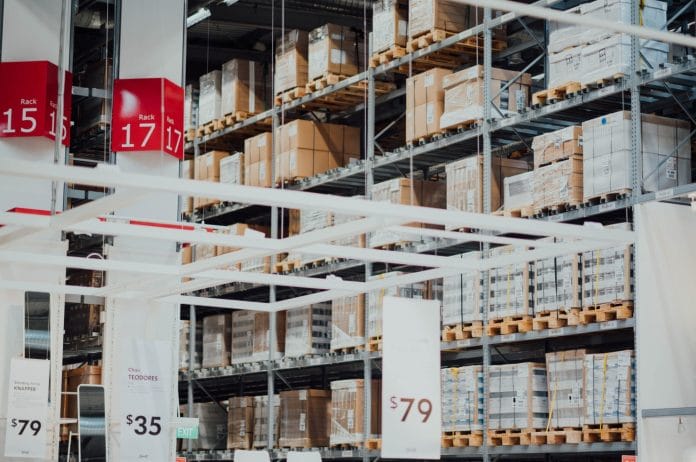The way we manage and optimize our warehouses is changing as a result of technological advancements in the constantly changing world of storage and logistics. Radio-frequency identification (RFID) and the Internet of Things (IoT) are two important participants in this transformation. These groundbreaking technologies have joined forces to eliminate what we call “warehouse blind spots”, thus breathing new life into efficiency, visibility, and overall productivity in storage and logistics operations.
Before we delve into how RFID and IoT are changing the game, let’s first grasp the concept of warehouse blind spots. These are areas within a storage facility or logistics operation that aren’t effectively monitored or managed. These blind spots can lead to various problems, including inventory inaccuracies, inefficient use of space, and security vulnerabilities. Traditionally, manual tracking systems and limited data visibility have been the culprits behind these issues. However, RFID and IoT have emerged as superheroes, stepping in to address and eradicate these blind spots.
At the heart of this transformation is Radio-Frequency Identification (RFID) technology. RFID utilizes radio waves to identify and track objects equipped with RFID tags or labels. These tags contain unique identifiers that can be scanned and recorded automatically, without needing direct line-of-sight or physical contact. Here’s how RFID is making waves in storage and logistics:
1. Real-time Inventory Management: RFID enables the real-time tracking of inventory movement within a warehouse. Whenever a tagged item passes an RFID reader, its location is updated in the system. This translates into accurate, up-to-the-minute data on inventory levels, reducing the risk of stock outs or overstock situations.
2. Improved Accuracy: Manual data entry and barcode scanning are human-dependent and therefore prone to errors. RFID technology eliminates these errors by automating the tracking process. The result is higher data accuracy and more reliable inventory records.
3. Enhanced Security: RFID isn’t limited to tracking inventory; it can also play a crucial role in access control and theft prevention. Tags can trigger alarms if they are removed or tampered with without authorization, making it easier to detect and prevent theft.
While RFID is a powerhouse on its own, the Internet of Things (IoT) takes warehouse management to the next level by connecting all devices and systems to the internet. IoT-enabled sensors and devices provide a treasure trove of data that, when combined with RFID, creates a comprehensive and insightful view of warehouse operations. Here’s how IoT complements RFID in eliminating warehouse blind spots:
1. Real-time Data Analytics: IoT sensors are like the eyes and ears of the warehouse. They have the ability to keep track of environmental factors like temperature, humidity, and light levels. This information is extremely useful in sectors like pharmaceuticals and food storage where maintaining strict environmental controls is essential.
2. Predictive Maintenance: Think of IoT sensors as your warehouse’s personal physicians. They can monitor the vital signs of machinery and equipment in real-time. By analyzing this data, maintenance teams can predict when equipment is likely to fail and perform preventive maintenance, reducing costly downtime.
3. Optimized Space Utilization: IoT-connected sensors can tell you precisely how your storage space is being utilized. Are some areas underutilized while others are overcrowded? With this data in hand, warehouse managers can optimize shelf space, reduce congestion, and improve overall efficiency.
4. Supply Chain Visibility: IoT doesn’t stop at the warehouse door; it extends its reach throughout the entire supply chain. With sensors on trucks, containers, and shipping materials, companies can gain real-time visibility into the movement of goods from the manufacturer all the way to the end consumer.
Industries and sectors in Malaysia should be more proactive in adopting RFID and IoT technologies in their warehouses. For example, industries dealing with high-value or perishable goods often have a stronger incentive to use these technologies for inventory management and quality control. Government initiatives aimed at promoting Industry 4.0 and digital transformation may encourage more warehouses to consider the adoption of RFID and IoT technologies especially for small medium enterprises (SMEs).
The pairing of RFID and IoT is a game-changer in storage and logistics. Together, they provide real-time visibility, accuracy, and control over every aspect of warehouse operations. From tracking inventory with RFID to monitoring environmental conditions and equipment performance with IoT, businesses can make data-driven decisions that optimize efficiency, reduce costs, and enhance customer satisfaction.
This technological synergy isn’t stagnant; it’s a dynamic force that continues to evolve and become more accessible. The elimination of warehouse blind spots is just the tip of the iceberg. We can anticipate even more significant advancements in storage and logistics as RFID and IoT continue to shape the industry, delivering agile and responsive supply chains for the future. The transformation is happening before our eyes, and those who embrace it are bound to enjoy the countless benefits it brings to the world of storage and logistics.
By Prof. Ts. Dr. Manjit Singh Sidhu, Professor at the College of Computing and Informatics, Universiti Tenaga Nasional (UNITEN), Fellow of the British Computer Society, Chartered IT Professional, Fellow of the Malaysian Scientific Association, Senior IEEE member and Professional Technologist MBOT Malaysia









